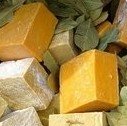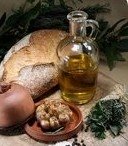Personal Solar Desalination Device for Clean Drinking Water
Solar desalination for
easy water purification whether you are out camping or worried about
drinking water in the future. It is a water purifier that is safe to
you and the environment and can be used anywhere, any time.
The Product:
University of Alabama Patented Personal Solar Desalination Device.The Problem:
The need to find inexpensive ways to treat water in drought-stricken or war-torn areas of the world with limited access to clean water for drinking or sanitation is growing. The EPA is interested in the panels because of their low environmental impact and because the process can eliminate brine pollution. Salt and minerals can crystallize in the unit and then be removed and put to another use.
In other methods of desalination, brine water is pumped back into bays or other bodies of water where the high saline content can be harmful to fish.
The Solution - A Solar Desalination Water Purifier:
Solar
energy, we realized, would be a cheap, easy way to
purify saltwater or groundwater, making it an ideal way for people in
developing countries with limited resources to get access to clean
drinkable
water. The solar desalination device is also being used by a wide
variety of those in the U.S. who
are concerned with the quality of their water such as home owners,
campers, hikers, preppers and boaters, to name a few.
The Result:
The solar
desalination panel received a lot of attention.
The University of Alabama team received $9,840 in grant money from the
United States Environmental Protection Agency and won $50,000 from
Alabama Launch Pad, a nonprofit organization that supports
entrepreneurs. That money was used for the development of the panels,
which began 3 + years ago.
The result has been a simple, yet powerful solar desalination product that uses no electricity, can be taken anywhere and extracts pure water from any contaminated water source. It removes radiation, fluoride, salt, pesticides, bacteria, dirt and other contaminants from any water. It allows people to be prepared for disasters, save hundreds on bottled water and utility bills.
The result has been a simple, yet powerful solar desalination product that uses no electricity, can be taken anywhere and extracts pure water from any contaminated water source. It removes radiation, fluoride, salt, pesticides, bacteria, dirt and other contaminants from any water. It allows people to be prepared for disasters, save hundreds on bottled water and utility bills.
The Explanation:
What is desalination?
It is the process of
removing salt (and sometimes other minerals) from
saltwater, seawater or polluted water from lakes, streams and wells.
Is desalinated seawater safe to drink?
It depends on the method
used to desalinate. All common methods produce
good water. Our method produces distilled water, which is free of most
contaminants and pollutants. We add a couple of marble chips to each
order, which provides an almost perfect mineral mix.
What is our Developing Nations Product?
Our product was invented
to solve water problems in Developing Nations.
It is a robust, low-maintenance method of producing potable, irrigable
water from any contaminated or saline source.
Through a Phase 1 P3 Sustainability Grant from the U.S. Environmental Protection Agency, we have created several world field test sites. In addition, we have deeply discounted product available for deployment in Developing Nations.
When someone purchases our product, part of the proceeds is reinvested into our Developing Nations product. We aim to bring this technology to places that need it most ... Bangladesh, India, Africa and the Pacific Rim, where quality water can save hundreds of thousands of lives that would otherwise be lost to cholera, giardia, hepatitis and diarrhea.
Through a Phase 1 P3 Sustainability Grant from the U.S. Environmental Protection Agency, we have created several world field test sites. In addition, we have deeply discounted product available for deployment in Developing Nations.
When someone purchases our product, part of the proceeds is reinvested into our Developing Nations product. We aim to bring this technology to places that need it most ... Bangladesh, India, Africa and the Pacific Rim, where quality water can save hundreds of thousands of lives that would otherwise be lost to cholera, giardia, hepatitis and diarrhea.
What is Drip Irrigation?
Conventional irrigation
douses the soil near a plant with water, and
much of the water dries or filters away before the plant's root system
can absorb it. The problem is that plants can only drink water fairly
slowly.
A compulsively-patient gardener could conceivably drip water very slowly onto a plant's roots, which would decrease water loss. But since few people are willing to do that, we use drip-irrigation systems which patiently drip water to each plant. (The amount of water can be adjusted at each drip head.) Much less water filters through the soil and less water evaporates in the air.
Drip irrigation has been used successfully in desert climates to grow food with high water efficiency. Now, with the advent of increased demand for freshwater, irrigation efficiency will become more important. Thus drip irrigation will gradually become as well-known as the ubiquitous as the common irrigation sprinkler. It is likely that future agriculture in dry climates may move completely to drip irrigation … it's remarkably more efficient.
A compulsively-patient gardener could conceivably drip water very slowly onto a plant's roots, which would decrease water loss. But since few people are willing to do that, we use drip-irrigation systems which patiently drip water to each plant. (The amount of water can be adjusted at each drip head.) Much less water filters through the soil and less water evaporates in the air.
Drip irrigation has been used successfully in desert climates to grow food with high water efficiency. Now, with the advent of increased demand for freshwater, irrigation efficiency will become more important. Thus drip irrigation will gradually become as well-known as the ubiquitous as the common irrigation sprinkler. It is likely that future agriculture in dry climates may move completely to drip irrigation … it's remarkably more efficient.
What is Brine Pollution?
When the desalination
process separates salt from water, the salt needs
to be managed in some way. The typical method is to send the salt-heavy
water back into a local bay or inlet. This ‘brine ‘has a salt
concentration many times higher than seawater. When injected back into
a bay or inlet, the marine organisms usually are not able to handle the
increased salinity. Like air pollution, the brine will dissipate with
time over a large area, but considerable damage can still be done close
to the area of emission.
What is our answer to Brine Pollution?
Our panel can be
configured to operate in ‘zero-brine mode where solid,
crystalline salt can be removed from the system, rather than brine.
Rather than having to dispose of several tons of brine, for instance,
the operator may only have to dispose of less than a ton of sale
crystals, which can be sold or used as a co product.
Why are there ANTI-Desalination groups?
One of the problems with
conventional desalination is that after the
salts and minerals are removed from the saltwater, a salt heavy,
concentrated brine remains. Molecular screens cannot treat this brine,
so it has to be disposed. If you're desalinating near an ocean, you can
pump the brine back in. On the surface, this seems like a harmless
solution, since the ocean is already salty, what's a little brine? But
it turns out that the salt-heavy brine takes a long time to disperse,
and it can kill organisms and harm marine environments near the pump-in
point.
If you’re desalinating inland, there is rarely a good place to get rid of the brine that won’t damage valuable cropland and soils. Unlike molecular screen and osmotic techniques, distillation can leave behind solid salt crystal residue instead of brine.
So instead of having to dispose of several tons of toxic brine, you may only have to dispose of a few hundred pounds of salt crystal. And unlike brine, there is a market for salt crystals, like road salting and food preservation, so they can be sold or used as a co-product.
Another problem with non-solar desalination is the large amount of power necessary to run the system, which can lead to conventional air pollution. Solar desalination systems like our Panel avoid these problems, to create a nearly 100% sustainable technology.
If you’re desalinating inland, there is rarely a good place to get rid of the brine that won’t damage valuable cropland and soils. Unlike molecular screen and osmotic techniques, distillation can leave behind solid salt crystal residue instead of brine.
So instead of having to dispose of several tons of toxic brine, you may only have to dispose of a few hundred pounds of salt crystal. And unlike brine, there is a market for salt crystals, like road salting and food preservation, so they can be sold or used as a co-product.
Another problem with non-solar desalination is the large amount of power necessary to run the system, which can lead to conventional air pollution. Solar desalination systems like our Panel avoid these problems, to create a nearly 100% sustainable technology.
Advantages of Solar Desalination:
One less worry ... solar
desalination makes your own water after
disasters and social
unrest. If you have sun and undrinkable water, then our 'personal solar
desalination device' will produce clean, tasty water, up to ten times
more pure than tap water.
It connects to any 2 or 3 liter water bottle and sets up in seconds. The personal solar desalination device produces up to 4 to 6 liters per day in full sunlight. Choose from five different packages.
The unit is tough and reliable. Made with UV-stabilized, reinforced plastics to provide years of use in direct sunlight, and FDA-compliant fittings and contact surfaces.
Multiple panels can be arrayed together to create an ‘oasis’ in a desert or any other non water or bad water area.
Made tough in the U.S.A.
See more information on the solar desalination device by visiting eco green energies.
It connects to any 2 or 3 liter water bottle and sets up in seconds. The personal solar desalination device produces up to 4 to 6 liters per day in full sunlight. Choose from five different packages.
The unit is tough and reliable. Made with UV-stabilized, reinforced plastics to provide years of use in direct sunlight, and FDA-compliant fittings and contact surfaces.
Multiple panels can be arrayed together to create an ‘oasis’ in a desert or any other non water or bad water area.
Made tough in the U.S.A.
See more information on the solar desalination device by visiting eco green energies.
Leave a Comment
Do you have anything that you would like to add after reading this page? We would love to hear your thoughts. If you can add additional information to what has been written here you will be adding value to the website! No need to have any special skills - just type and submit. We will do the rest!
Don't miss out on our latest news and articles. Sign up for our free monthly e-zine!
OTHER SECTIONS OF INTEREST
 Natural
Pesticides
Natural
Pesticides
 Farm
Exchange
Farm
Exchange
 Farmers'
Directory
Farmers'
Directory
 Making
Soap
Making
Soap
 Country
Recipes
Country
Recipes
Country Crafts



New! Comments
Do you have something of value to add? Leave me a comment in the box below.